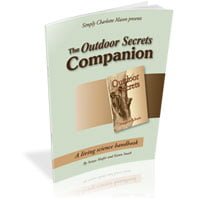60-day returns • free shipping on USA orders $129+


There is one question we see a lot when talking about elementary science lessons:
“But is it enough?”
Charlotte Mason used nature study and living science books with narration to teach science in the younger grades.
We CMers want to believe that those methods will accomplish what is needed during the elementary years, but for some reason it’s easy to keep second-guessing ourselves. Are nature study and living books enough?
Karen Smith and I were discussing this very question a couple of weeks ago, and she said something that really emphasized the power of those two simple methods. Karen explained things this way.
During the elementary years, your science lessons should accomplish three things:
- Nurture within your child a sense of wonder at God’s creation.
- Cultivate a habit of careful observation.
- Lay the groundwork of personal experience that will support future science studies.
If that is our goal, then nature study and living science books are not only “enough,” but far superior! Nature study accomplishes all three goals. And a good living science book will do the same.
That’s why we republished Outdoor Secrets, a delightful living science book for the younger grades.
And now, we’re pleased to announce The Outdoor Secrets Companion. This handbook details additional living science books, nature study ideas, nature notebook suggestions, and beautiful poetry that correspond to the plant and animal stories in Outdoor Secrets.
The Outdoor Secrets Companion will help your children keep exploring and learn even more about
- Where does the apple blossom go?
- Of what use is an earthworm?
- What good does the March wind do?
- And more . . .
Use the lessons at your own pace. Enjoy a few weeks or a few months of discovering more about Outdoor Secrets with The Outdoor Secrets Companion.
Download the free sample book today.
Because, yes, nature study and living science books are enough!
Outdoor Secrets Links and Tips
The Outdoor Secrets stories introduce so many great animals and plants that we’ve created a Links and Tips page to save you some time and give you more information at your fingertips. Follow the links there to learn more about the century plant and the goldenrod, dragonflies and seed dispersion, plus much more.
Feel free to use the Links and Tips pages for all of our books’ topics, even if you don’t buy those particular books. We want the Links and Tips pages to be a helpful resource for every homeschool!

I can’t wait to try this with my kindergarten and 1st grader! I’m wondering if it would fit better seasonally in the spring or fall? We live in WI. Thanks, Melissa